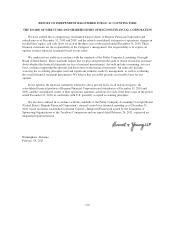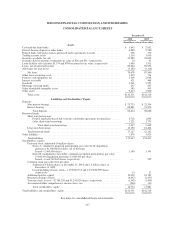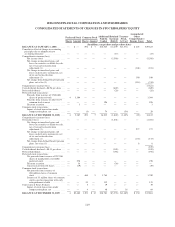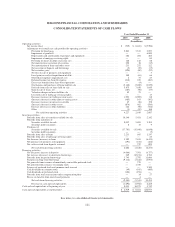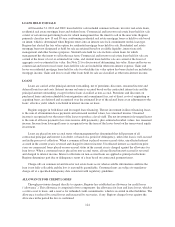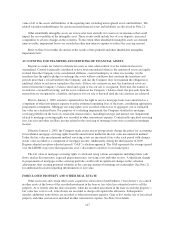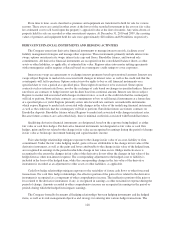Regions Bank 2010 Annual Report Download - page 139
Download and view the complete annual report
Please find page 139 of the 2010 Regions Bank annual report below. You can navigate through the pages in the report by either clicking on the pages listed below, or by using the keyword search tool below to find specific information within the annual report.The allowance is maintained at a level believed adequate by management to absorb probable losses inherent
in the loan portfolio and in accordance with GAAP and regulatory guidelines. Management’s determination of
the adequacy of the allowance is a quarterly process and is based on an evaluation and rating of the loan portfolio
segments, historical loan loss experience, current economic conditions, collateral values of properties securing
loans, volume, growth, quality and composition of the loan portfolio segments, regulatory guidance, and other
relevant factors. Changes in any of these, or other factors, or the availability of new information, could require
that the allowance be adjusted in future periods. Actual losses could vary from management’s estimates.
Management attributes portions of the allowance to loans that it evaluates and determines to be impaired and to
groups of loans that it evaluates collectively. The remaining allowance is available to cover all charge-offs that
arise from the loan portfolio.
In determining the appropriate level of allowance, management uses information to stratify the loan
portfolio segments into loan pools with common risk characteristics. Classes in the commercial and investor real
estate portfolio segments are disaggregated based upon underlying credit quality and probability of default.
Classes in the consumer portfolio segment are disaggregated by accrual status. Certain portions of the allowance
are attributed to loan pools based on various factors and analyses, including but not limited to, current and
historical loss experience trends and levels of problem credits, current economic conditions, changes in product
mix and underwriting. Loans deemed to be impaired include non-accrual loans, excluding consumer loans, and
troubled debt restructurings (“TDRs”). Impaired loans with outstanding balances greater than or equal to $2.5
million are evaluated individually rather than on a pool basis as described above. For these loans, Regions
measures the level of impairment based on the present value of the estimated projected cash flows, the estimated
value of the collateral or, if available, the observable market price. Regions generally uses the estimated
projected cash flow method to measure impairment. For consumer TDRs, Regions measures the level of
impairment based on pools of loans stratified by common risk characteristics.
In order to estimate a reserve for unfunded commitments, Regions uses a process consistent with that used
in developing the allowance for loan losses. Regions estimates future fundings, which are less than the total
unfunded commitment amounts, based on historical funding experience. Allowance for loan loss factors, which
are based on product and customer type and are consistent with the factors used for portfolio loans, are applied to
these funding estimates to arrive at the reserve balance. Changes in the reserve for unfunded commitments are
recognized in other non-interest expense.
PREMISES AND EQUIPMENT
Premises and equipment are stated at cost, less accumulated depreciation and amortization, as applicable.
Depreciation expense is computed using the straight-line method over the estimated useful lives of the assets.
Leasehold improvements are amortized using the straight-line method over the estimated useful lives of the
improvements (or the terms of the leases, if shorter). Generally, premises and leasehold improvements are
depreciated or amortized over 10-40 years. Furniture and equipment are generally depreciated or amortized over
3-12 years.
Regions enters into lease transactions for the right to use assets. These leases vary in term and, from time to
time, include incentives and/or rent escalations. Examples of incentives include periods of “free” rent and
leasehold improvement incentives. Regions recognizes incentives and escalations on a straight-line basis over the
lease term as a reduction of or increase to rent expense, as applicable, in net occupancy expense in the
consolidated statements of operations.
INTANGIBLE ASSETS
Intangible assets include goodwill, which is the excess of cost over the fair value of net assets of acquired
businesses, and other identifiable intangible assets. Other identifiable intangible assets include the following:
(1) core deposit intangible assets, which are amounts recorded related to the value of acquired indeterminate-
maturity deposits, (2) amounts capitalized related to the value of acquired customer relationships and (3) amounts
125



